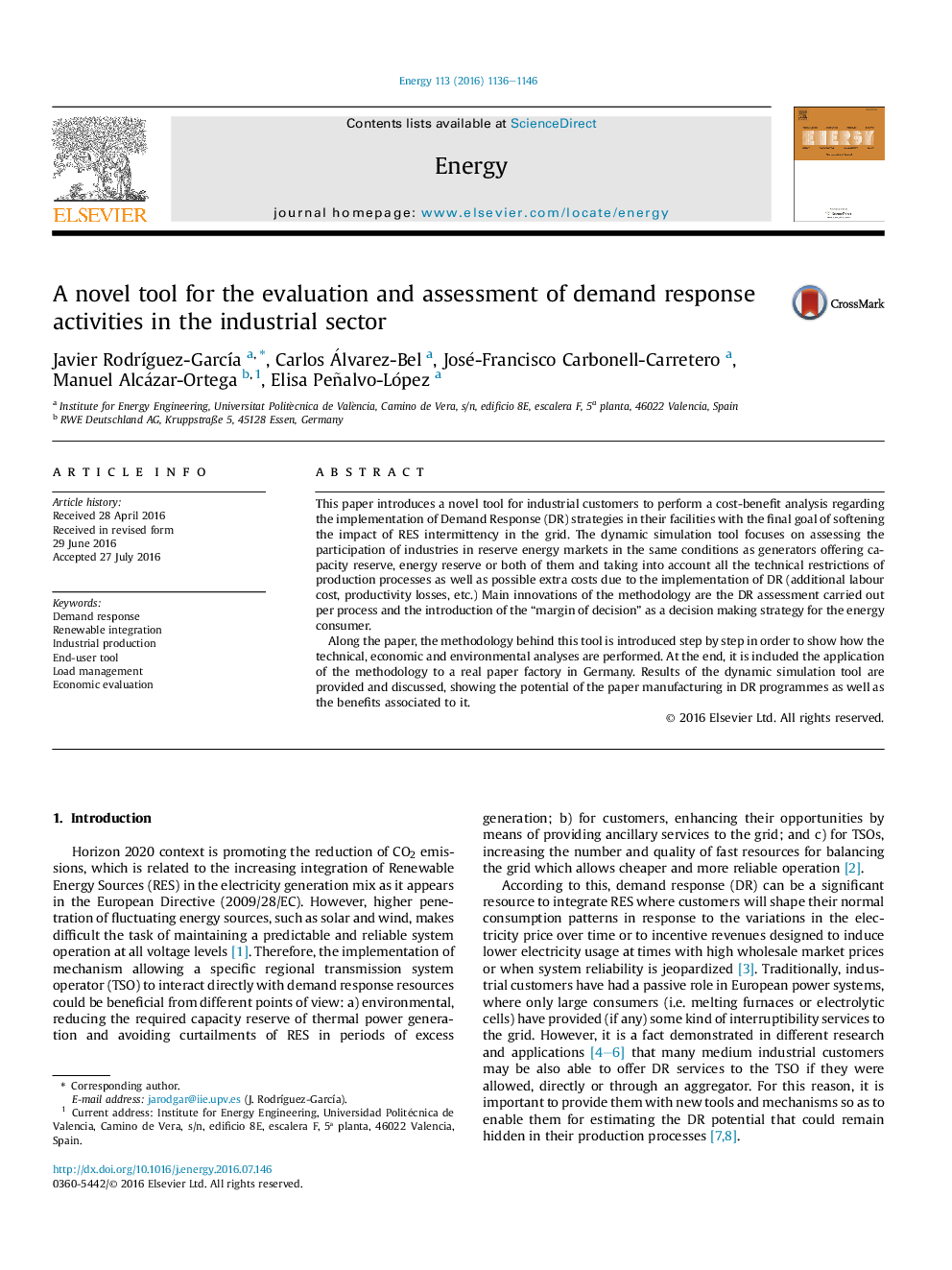| Article ID | Journal | Published Year | Pages | File Type |
|---|---|---|---|---|
| 1730811 | Energy | 2016 | 11 Pages |
•A novel tool for a cost-benefit analysis of Demand Response applications is done.•This end-user tool evaluates the participation of industries in reserve energy markets.•The environmental impact of DR is quantified considering the carbon footprint of generations.•The tool has been validated in four industrial customers from three European countries.
This paper introduces a novel tool for industrial customers to perform a cost-benefit analysis regarding the implementation of Demand Response (DR) strategies in their facilities with the final goal of softening the impact of RES intermittency in the grid. The dynamic simulation tool focuses on assessing the participation of industries in reserve energy markets in the same conditions as generators offering capacity reserve, energy reserve or both of them and taking into account all the technical restrictions of production processes as well as possible extra costs due to the implementation of DR (additional labour cost, productivity losses, etc.) Main innovations of the methodology are the DR assessment carried out per process and the introduction of the “margin of decision” as a decision making strategy for the energy consumer.Along the paper, the methodology behind this tool is introduced step by step in order to show how the technical, economic and environmental analyses are performed. At the end, it is included the application of the methodology to a real paper factory in Germany. Results of the dynamic simulation tool are provided and discussed, showing the potential of the paper manufacturing in DR programmes as well as the benefits associated to it.
